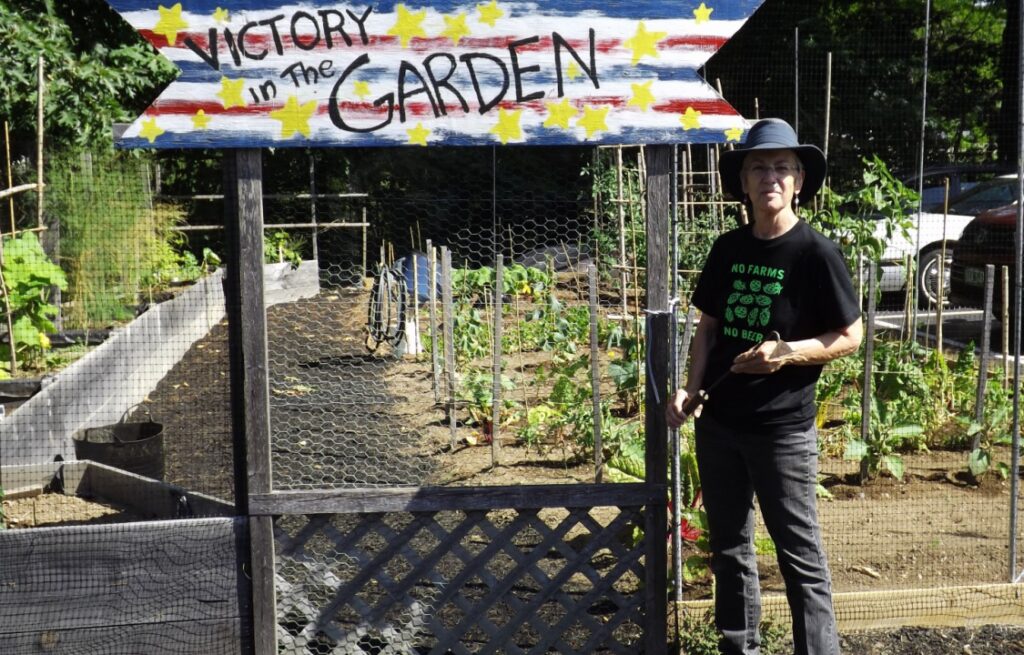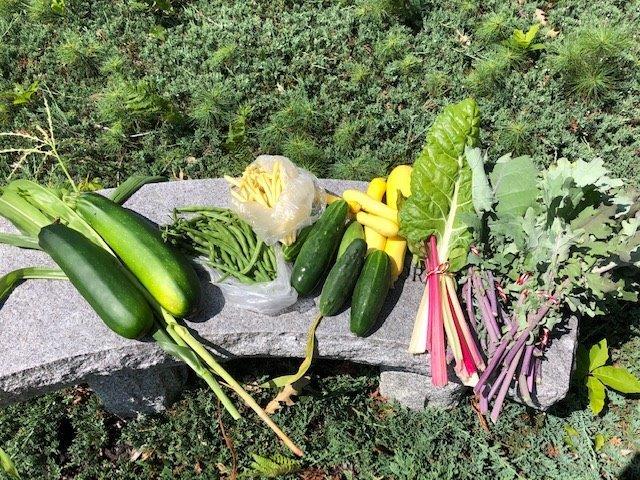
This guest article was prepared by Master Gardener Christin Kaiser. Christin is a volunteer at the Wright Museum, lending her expertise to our working Victory Garden and various other projects.
If recent events have sidetracked your plans to have a garden this year, never fear – there’s still time! If you look at how Mother Nature “plans her gardens”, you’ll see that not all seeds germinate at once, even from the same batch of seeds: some have thinner seed coats and germinate early, while others have a thicker coat that can mean a few weeks delay in sprouting. This is an evolutionary device to insure that some of the parent plants’ offspring survive late frosts (or late planting) or other ecological upsets. The prime directive of all plants, and particularly annuals, is to grow their replacements…so they have developed traits that allow them to survive a lot of hazards…including sidetracked human helpers.
If you are just starting out now, you can either remove the sod from a patch of sunny lawn, or the bigger weeds from last year’s garden area. Or lay down a layer of thick cardboard over the grass and weeds and cover with clean soil. There are a many great soil blends on the market. My favorite is The Coast of Maine selections. I mix that into my existing soils each time I transplant or hoe a row to plant seeds. I also mix that (50/50) with Pro Mix peat moss that has a generous amount of Mycorrhizae bacteria. These bacteria form a symbiotic relationship with plant roots to assist them to retrieve the otherwise unavailable nutrients in the soil. Do a search on this, it’s fascinating!
Once you have established a planting bed, there are still many six pack veggie starts on the market, as growers have doubled their efforts to take advantage of the new demand for home gardens that the pandemic has created. If there aren’t any started plants available, you still have a huge selection of plants that can be directly sown in the garden now and through mid July (& early August for fall-winter harvest.)
Here’s a quick list of easy to grow veggies to start by direct seeding. I’ll often start them outside in pots so I can develop a strong root system and not forget to water during this critical time. Root crops have to be started in the garden, but others can benefit from a bit of nurturing in trays or pots, then be transplanted on a grey or misty day or later in the afternoon, when the sun isn’t so fierce.
– All leafy greens; lettuces, kales, sprouting broccoli, green onions – as long as you water well you’ll make up for the delay in planting.
– Most herbs, though dill and cilantro may bolt in the heat, so plan smaller seeding at a weekly interval (a pinch here then another later on).
– Root crops: carrots, beets, radishes. Beets can provide baby greens from thinning (beet seeds have many seeds in one rough ball shaped seed coat) or older greens for stir frying. Carrots can be sown like the bolting herbs, a little bit now, then a bit more each week so you have a continual harvest not all at once.
– Summer squashes: these heat loving plants are perfect to grow now and going forward to keep the supply of tender young fruit available over the summer and early fall. We all know the jokes about how to use those extra zucchini’s, but better yet is to plan for a couple plants at different stages, so the fruit is easy to harvest and the plant isn’t too large or old and subject to disease!
– Beans: another heat-happy plant. Sow the beans at intervals of two weeks and you’ll be enjoying fresh veg all summer and into the early fall.
By early August, you can plant broccoli, kale, cabbage and other ‘cold weather’ veg. More radishes and carrots. To keep the fall crops protected and able to be harvested throughout the winter, construct some hoops to go over the crops and cover with a thick frost fabric, then clear plastic.
Nothing is as satisfying as going out to harvest the kale for Christmas dinner, maybe even digging up a few carrots if you’ve mulched them well so the soil hasn’t frozen.
Eliot Coleman’s book ‘The Four Season Harvest’ is a must read for anyone interested in this, or just great gardening advice.

Stop by the Wright Museum Victory Garden, and see what we are doing. It’s a demo garden that shows several of the typical plants people in New England grew during WWII, plus a few Asian varieties that Japanese-Americans would have grown in the internment camps. Our harvest goes The Wolfeboro Food Pantry at All Saints Church.
Happy Summer Gardening! Remember that being outside working with the Web of Life in the garden is one of the best stress relievers available. City dwellers pay big bucks to go take part in nature retreats and the new activity called ‘Forest Bathing’. You can have all the benefits for free…in fact ‘get paid’ to relax, with the fruits of your labors!
Be sure to check out the links provided here by UNH Cooperative Extension for additional assistance with your summer gardening plans!
– Christin W Kaiser, UNH Carroll Co. Ext. Advanced Master Gardener
Additional resources provided by UNH Cooperative Extension:
Granite State Gardening series – Facebook Live events and recordings (you don’t need to have a Facebook account to access these)
https://extension.unh.edu/events/granite-state-gardening-facebook-live-series-emma-erler
Gardening blogs
https://extension.unh.edu/blog/planting-victory-garden
Fact sheets
https://extension.unh.edu/programs/ask-unh-extension
https://extension.unh.edu/search/google/vegetable%20gardening
Community Garden guidelines in the time of COVID-19
https://extension.unh.edu/resource/nh-community-gardens-growing-safely-during-covid-19
“NH Outside with Emma Erler”, a monthly electronic newsletter with timely tips on yard and garden topics.
https://unhoutreach.tfaforms.net/217751?CID=701G0000000Fc5p
Do you have questions about home gardening? Contact the UNH Extension InfoLine
Email: answers@unh.edu or call 1-877-EXT-GROW




